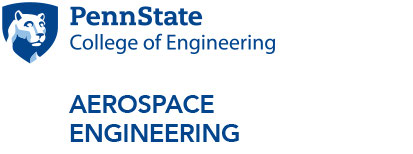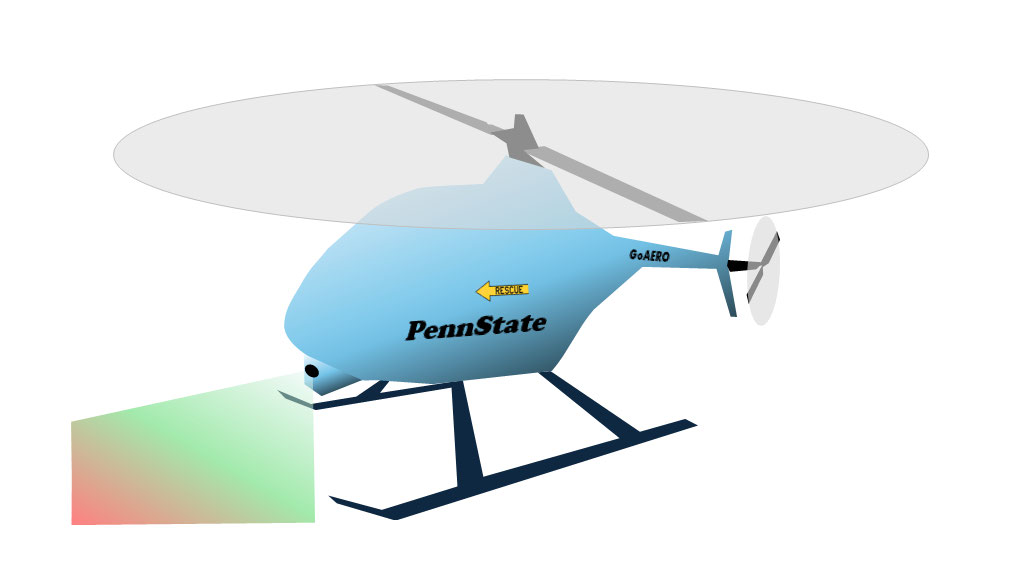GoAERO Stage 1 Winner
US University Innovation Award Winner

From piloting gliders to pioneering autonomous aircraft for emergency response, Rachel Axten is charting an innovative course in aviation and aerospace engineering. Now a Ph.D. candidate in the Penn State University Unmanned Aircraft Systems Research Laboratory (PURL), Rachel combines her passion for flight with cutting-edge engineering to develop technologies that could revolutionize emergency response operations.
I have always been interested in the pilot-aircraft interaction,” says Rachel, who holds both a private pilot’s license for single-engine aircraft and considers gliding her favorite flying experience. “Luckily, Penn State is located near excellent spots for ridge soaring, so I plan to work towards that rating next.”
Her journey through aerospace began at Penn State’s Aerospace Department, where she earned her bachelor’s and master’s degrees. While she initially considered a career as a pilot, her fascination with the technical aspects of flight led her down an engineering path that would allow her to shape the future of aviation technology.
This path has led to her current role as the principal of Penn State’s team in the global GoAERO challenge, where she’s working to develop a new category of emergency response flying vehicles that can overcome the limitations of current-day helicopters and drones. “My advisor and colleagues at PURL build flight software for uncrewed aircraft systems, so applying that to public safety tasks is exciting,” Rachel explains. “We are especially enthusiastic about this opportunity to demonstrate autonomy that enables robust operation in unknown environments that are currently hazardous to Emergency Medical Services teams.”
She is not the only member of the Penn State team who is very excited about GoAERO. In fact, they are all “over the moon” about the team’s selection as one of 11 winners of GoAERO’s Stage 1 and one of 14 awardees receiving funds from GoAERO with support from NASA’s University Innovation project.
“This really means a lot to us,” says team member Dr. Eric Johnson, a professor in the Department of Aerospace Engineering at Penn State and director of PURL, where he is Rachel’s advisor. “It gives us confidence that we are meeting the GoAERO requirements while also advancing our ‘storyline’ – that we are on the right track with what we have conceived.”

What the team has conceived is SWIFT, an unmanned aircraft system designed as an easy-to-deploy and easy-to-operate heavy-lift system suited for various public safety missions. It features a fully autonomous waypoint following with collision avoidance protection and landing zone selection with minimum operator inputs, while also enabling faster response times, larger payload capacities, and safer operations for all crew members responding to emergencies, explains Dr. Johnson.
He, himself, has performed research in adaptive flight control, aided inertial navigation, and autonomous systems. He was the lead system integrator for rotorcraft experiments for the DARPA Software Enabled Control program, which included the first air launch of a hovering aircraft, the automatic flight of a helicopter with a simulated frozen actuator, and adaptive flight control.
“I’ve wanted to be an aerospace engineer since I was only 10 years old,” Dr. Johnson relates, humbly omitting that 30 years ago his life ambition was already bearing fruit for him: he was a member of the winning team in an MIT-sponsored competition that created one of the world’s first GPS-guided helicopters.
The Penn State team member Venkat Iyer had similar ambitions since his childhood in India. The Ph.D. candidate in PURL says, “I’ve always enjoyed making things that fly, the more complex the better, from helicopters to control center systems.”
After receiving his bachelor’s degree in electrical engineering from Mumbai University, Venkat worked as a rotorcraft system engineer at Hindustan Aeronautics Limited in India, where he oversaw the design and certification of avionics systems. At Penn State, from where he received his master’s degree, he is currently engaged in advancing vision-based navigation techniques for unmanned aerial systems.
“I can’t imagine not doing this,” exclaims Venkat, of GoAERO. “After meeting recently with First Responders, the humanitarian mission of the competition became even more important. It motivates me to want to do even better.”
For Rachel, it is the increasingly intense natural disaster events, including hurricanes and wildfires, that “motivate the technologies we seek to accomplish. Moving large payloads or providing situational awareness to a ground response team without risking an onboard crew is always critical in these events.”
To achieve this goal, the Penn State team will rely on its vast experience in all aspects of developing UAS and VTOL aircrafts. Of equal if not more importance to Rachel, she has already gained valuable experience in building and testing emergency response flyers. Since 2019, she has competed with a team of Penn State graduate students in the National Institute of Standards and Technology’s Public Safety Communications Research Division UAS First Responder Challenges, where they have won more than $370,000. These challenges have been related to small UAS across public safety tasks, including search-and-rescue, security, indoor navigation, and 3D mapping.
“Our interaction with public safety partners, especially at the NIST Final Fly-Off events, has been incredibly motivating as we seek to build useful drone products to improve public safety response,” Rachel exclaims.
Speaking of Final Fly-Offs, Rachel and her teammates are already looking ahead to having a large-scale platform to integrate and further test the software elements required for GoAERO’s ultimate challenge.
Yet, even with the team’s Stage 1 success and the funding that comes with it, as well as through the NASA University Innovation Project award, Rachel acknowledges that there are still barriers to overcome, the biggest, without a doubt, is “time. As this is a university team, building the right team willing to put in the time for a competition like this is always a challenge.”
The core team is solid but is also recruiting more students. “Luckily, the GoAERO Prize is itself a motivator,” Rachel says, adding that they have a large group of qualified faculty and students who are a part of the Penn State Vertical Lift Research Center of Excellence from which to recruit.
To this end, other team members include Dr. Vitor T. Valente, a native of Brazil who is an assistant researcher in PURL, where he is currently investigating a new flight control system design for multirotor vehicles focused on reducing the acoustic noise generated while in flight; Ani Perumalla, currently pursuing a Ph.D. in aerospace engineering whose interests include computer vision techniques and collision avoidance for unmanned systems; Samay Shingatwar, Ethan Shakour, Ishan Haque, and Aum Dave.
In the meantime, the team members continue to expand their aeronautic, aviation, and engineering knowledge and hone their skills through experiential education opportunities, such as those in which Rachel was involved during her undergraduate days. She participated in a human-powered aircraft project in a freshman-senior class and competed on Penn State’s AIAA Design, Build, Fly team. She also completed three internships with the Boeing Company across different disciplines, including flight test operations, wind tunnel testing, and satellite guidance, navigation and control (GNC). More recently, she’s been an intern at the NASA Langley Dynamic Systems & Control Branch, where she works on advanced flight control related to Advanced Air Mobility (AAM) aircraft.
Aviation runs in Rachel’s family. Her father, a retired US Navy Test Pilot who now works as a Test Pilot at Sikorsky Aircraft, helped spark her early interest in flight through small airplane and helicopter rides these. Experiences would later influence her specific interest in flight control design.
Throughout these experiences and her educational pursuits, Rachel notes she’s been fortunate to have a strong family foundation – in addition to her parents, she has a devoted husband and a child – and wonderful mentors to guide and counsel her. These include her high school math and science teachers “who encouraged my studies and set me up well for my undergraduate studies”; her mentors at Boeing, including Jason Zonca and Mat Rueger; her current NASA team, including Dr. Irene Gregory; and the Penn State Aerospace Engineering faculty, including her graduate advisor, Dr. Eric Johnson, her undergraduate advisor, Dr. Mark Maughmer, and Dr. Namiko Yamamoto.
Rachel declares, “I owe them and many others for much of my success, for their instruction, patience, and mentoring over my academic career. I wouldn’t be where I am today without them.”
To highlight your GoAERO Team, contact us at info@goaeroprize.com.
REMINDER: Stage 2 Registration Documents are available here.
Benefits for Teams can be found here.
Team Summit: Let us know if you can join here.
